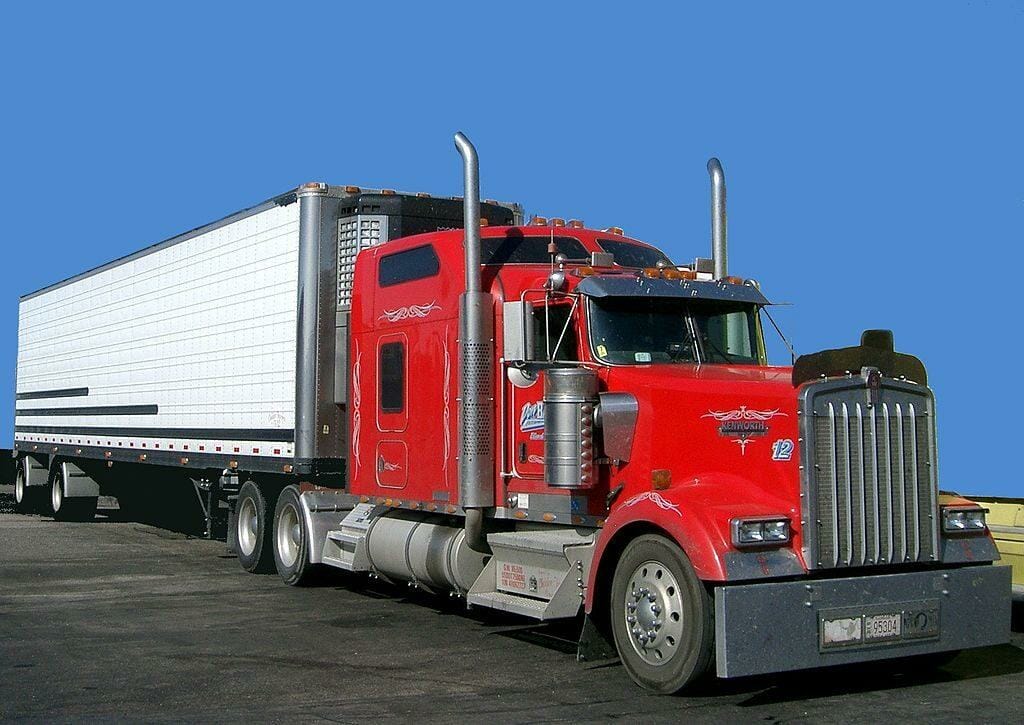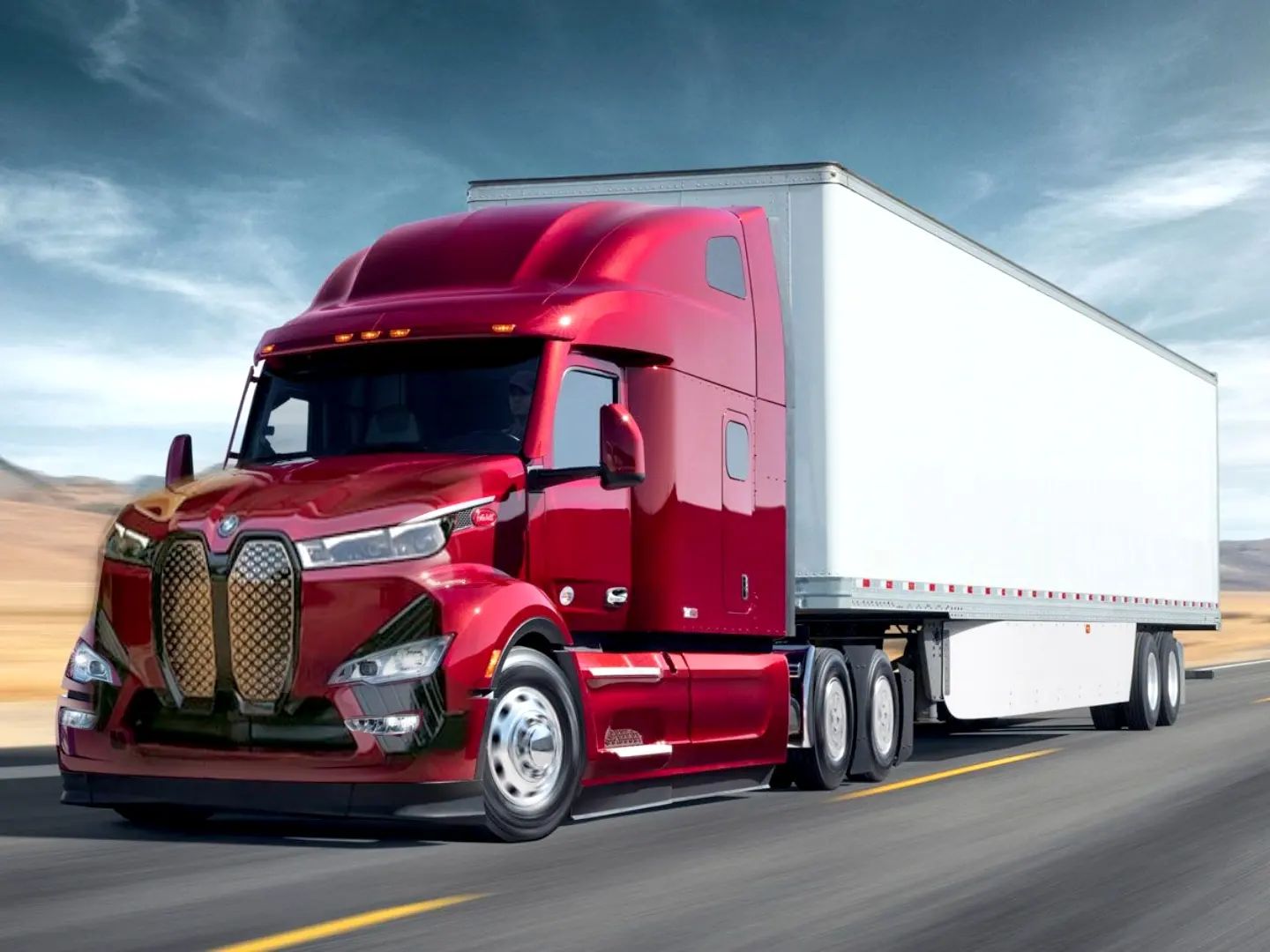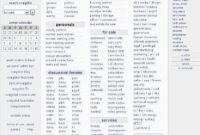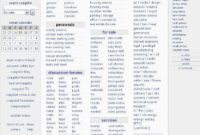Semi Trucks For Sale Under $10,000: Navigating the Entry Point to Commercial Hauling pickup.truckstrend.com
The dream of owning your own semi-truck and hitting the open road as an independent owner-operator is a powerful one. However, the sticker shock of new or even late-model used trucks, often ranging from $50,000 to well over $200,000, can quickly bring that dream crashing back to reality. But what if there was an entry point that didn’t require a six-figure investment? Enter the world of "semi trucks for sale under $10,000."
This price bracket represents a unique segment of the commercial vehicle market, offering an incredibly affordable, albeit challenging, pathway into the trucking industry. While it’s tempting to dismiss these trucks as mere scrap metal, for the savvy and mechanically inclined individual, a sub-$10,000 semi-truck can be a legitimate starting point for niche hauling, a parts donor, or even a learning platform. This comprehensive guide will delve into the realities, opportunities, and crucial considerations when exploring semi trucks in this budget-friendly category, transforming what might seem like a pipe dream into a tangible, albeit demanding, venture.
Semi Trucks For Sale Under $10,000: Navigating the Entry Point to Commercial Hauling
The Reality of Sub-$10,000 Semi Trucks: Managing Expectations
Let’s be clear from the outset: a semi truck priced under $10,000 is not going to be a shiny, low-mileage, turnkey operation. These are typically older vehicles, often spanning 15-30 years in age, with high mileage readings often exceeding 750,000 to well over a million miles. They have earned their low price tag through extensive use, depreciation, and the inevitable wear and tear that comes with countless miles on the road.
Why are they so cheap?
The primary reasons for such low prices include:
- Age and Depreciation: Like any vehicle, semi trucks depreciate rapidly, especially after their prime years of service.
- High Mileage: Engines and transmissions, while built for longevity, still have a finite lifespan. High mileage indicates components are closer to the end of their service life.
- Maintenance History (or Lack Thereof): Many trucks in this range have either been neglected or have extensive, costly issues that previous owners deemed too expensive to repair.
- Emissions Regulations: Older trucks often predate modern emissions standards (e.g., DPF, DEF systems). While this can mean simpler mechanics, it also means they may not be legal to operate in certain areas (like California’s CARB regulations) or could face higher tolls/fees.
- Market Saturation: There’s a constant turnover of older fleet vehicles, creating a supply that outpaces demand for these specific units.

Who is this market for?
This segment isn’t for everyone. It’s best suited for:

- Mechanically Inclined Owner-Operators: If you can do your own repairs or have a trusted, affordable mechanic, you can save significant money.
- Start-ups on a Shoestring Budget: For those needing a truck immediately to secure contracts and build capital, understanding that a significant portion of the initial budget will go towards repairs.
- Niche Haulers: Individuals involved in local farm hauling, short-distance specialty freight, or as a dedicated backup vehicle where long-haul reliability isn’t the primary concern.
- Parts Vehicles: Sometimes, a sub-$10,000 truck is bought solely for its engine, transmission, or other major components to repair another truck.
- Learning Platform: Aspiring owner-operators can use these trucks to learn the ropes of maintenance, pre-trip inspections, and basic operations without a massive financial commitment.
Where to Find Bargain Semi Trucks
Finding a sub-$10,000 semi truck requires patience and casting a wide net. You won’t typically find these on the front lot of major dealerships.
-
Online Marketplaces:
- TruckPaper.com, CommercialTruckTrader.com, MyLittleSalesman.com: These are the big players for commercial vehicle listings. Use their filters to set your maximum price.
- Craigslist and Facebook Marketplace: Often where individual owners or smaller, independent dealers list their cheapest inventory. Be wary of scams and always inspect in person.
- GovDeals.com, PurpleWave.com, IronPlanet.com (now Ritchie Bros. Auctioneers): Government surplus and industrial auction sites frequently list older, high-mileage trucks that didn’t sell at higher prices.
-
Auctions:
- Public Auctions/Heavy Equipment Auctions: Many auction houses specialize in commercial vehicles and heavy equipment. Attend preview days to inspect vehicles.
- Impound Lot Auctions: Less common, but sometimes impounded commercial vehicles are sold off.
- Fleet Liquidation Sales: Large trucking companies occasionally sell off older parts of their fleet directly. Keep an eye on industry news or network with fleet managers.
-
Independent Dealers & Brokers: Smaller, local used truck dealers often have a "bargain" section or "as-is" inventory.
-
Word of Mouth & Networking: Talk to local mechanics, other owner-operators, and truck stop personnel. Sometimes the best deals are found through informal channels.
Key Considerations Before Buying
Purchasing a semi truck under $10,000 is less about buying a vehicle and more about acquiring a project. Due diligence is paramount.
- Condition is King: This cannot be stressed enough. A thorough inspection is vital.
- Engine & Transmission: Check for leaks (oil, coolant, fuel), excessive smoke (blue, black, white), strange noises (knocking, ticking), and proper shifting (manual or automatic). Ask about recent engine work or rebuilds.
- Frame & Suspension: Look for cracks, excessive rust, bends, or previous repair welds on the frame rails. Inspect suspension components (springs, airbags, shocks) for wear or damage.
- Tires & Brakes: Tires are expensive. Check tread depth, uneven wear, and overall condition. Inspect brake drums, shoes, and air lines for leaks or damage. Ensure the air compressor builds pressure quickly.
- Electrical System: Test all lights (headlights, taillights, markers, interior), gauges, and accessories. Electrical issues can be notoriously difficult and expensive to diagnose.
- Cab & Interior: Check for water leaks, mold, worn seats, and functional HVAC. While cosmetic, significant issues here can indicate deeper problems.
- Maintenance History: Demand to see service records. A truck with high mileage but meticulous maintenance is often a better bet than a lower-mileage truck with no history.
- DOT Compliance: Assume the truck is NOT DOT compliant. You will likely need to invest in repairs to bring it up to federal and state safety standards before it can legally haul freight. This includes lights, brakes, tires, steering, and suspension.
- Mileage & Hours: While high mileage is expected, look for consistency. If the odometer seems suspiciously low for the truck’s age, be wary. Engine hours can sometimes be a more accurate indicator of wear.
- Engine Type & Emissions: Be aware of the engine model and its emissions tier. Older engines (pre-2007, especially pre-2000) will not have DPF/DEF systems, which can simplify maintenance but limit where you can operate. Research state-specific emissions regulations (e.g., California’s CARB) that may prohibit older, non-compliant trucks from operating within their borders.
- Purpose: Does the truck match your intended use? A day cab might be cheaper but limits long-haul options. A heavy-haul spec truck is overkill for light loads.
- Pre-Purchase Inspection (PPI): This is non-negotiable. Hire a qualified heavy-duty truck mechanic to perform a thorough inspection. It’s worth every penny to uncover hidden issues that could cost thousands later. If the seller refuses a PPI, walk away.
The True Cost of a "Cheap" Truck: Hidden Expenses
The $10,000 purchase price is just the beginning. Budgeting for subsequent costs is crucial.
- Immediate Repairs & Reconditioning: Factor in at least 20-50% of the purchase price, or even more, for immediate repairs, parts, and labor to get the truck roadworthy and DOT compliant. This could include new tires, brake work, fluid changes, electrical fixes, or even minor engine/transmission repairs.
- Ongoing Maintenance & Parts: Older trucks demand more frequent and intensive maintenance. Parts for very old or obscure models can sometimes be harder to find or more expensive.
- Insurance: Commercial truck insurance is expensive. Older trucks might have higher premiums due to perceived lower reliability or increased risk.
- Registration & Licensing: Standard costs for plates, IFTA decals (for interstate operation), and potentially UCR (Unified Carrier Registration).
- Fuel Efficiency: Older engines are generally less fuel-efficient than modern counterparts, leading to higher operating costs per mile.
- Downtime: The most significant hidden cost. If your truck is constantly in the shop, it’s not making you money. Factor in potential lost revenue due to breakdowns.
Tips for a Successful Purchase
- Set a Realistic All-In Budget: Don’t just budget for the purchase price. Account for immediate repairs, insurance, registration, and a contingency fund for unexpected issues.
- Do Your Research: Learn about common issues for specific makes and models you’re considering. Online forums and trucking communities are excellent resources.
- Be Patient: Don’t jump on the first truck you see. The right deal might take weeks or months to find.
- Negotiate Hard: Sellers of these trucks often have wiggle room. Be prepared to point out defects and use them as leverage for a lower price.
- Bring a Checklist: When inspecting, have a detailed checklist to ensure you don’t miss anything.
- Understand Your Needs: Don’t buy a truck that’s too big, too small, or incorrectly spec’d for the type of hauling you plan to do.
- Network: Talk to other owner-operators, especially those who run older equipment. They can offer invaluable advice, mechanic recommendations, and insights into common problems.
Potential Challenges & Solutions
- Challenge: Finding a "Diamond in the Rough."
- Solution: Patience, extensive research, and a non-negotiable pre-purchase inspection by an independent, qualified mechanic. Look for trucks from smaller, well-maintained fleets or individual owners who took pride in their equipment.
- Challenge: Unexpected Breakdowns & Costly Repairs.
- Solution: Always have an emergency fund specifically for repairs. Develop a strong relationship with a reliable heavy-duty mechanic. Learn basic diagnostics and preventative maintenance yourself. Consider carrying essential spare parts (belts, hoses, filters).
- Challenge: Regulatory Compliance (Emissions, DOT).
- Solution: Thoroughly research federal and state emissions laws for the specific year and engine of the truck you’re considering. Understand DOT requirements and be prepared to invest in any necessary safety upgrades. Avoid areas with strict emissions rules if your truck won’t comply.
- Challenge: Securing Financing.
- Solution: It’s highly unlikely you’ll get traditional commercial truck financing for a vehicle under $10,000 due to its age and perceived risk. Be prepared to pay cash, use a personal loan, or explore options like a home equity loan if available.
Sample Price Information for Semi Trucks Under $10,000
Please note: Prices are highly variable based on specific condition, mileage, location, and seller. This table provides representative examples of what you might find in this budget.
| Make/Model | Year Range | Typical Price Range (USD) | Key Features/Notes | Common Issues (at this price point) |
|---|---|---|---|---|
| Freightliner FLD/Century Class | 1995-2005 | $4,000 – $9,500 | Abundant parts, familiar to many mechanics, often high mileage (1M+). Day/Sleeper options. | Electrical gremlins, worn suspension, air leaks, rust on cab/frame. |
| Peterbilt 379/377 | 1990-2000 | $6,000 – $10,000 | Classic styling (379), strong resale value even when old, robust components. | Rust on fenders/hood, air conditioning issues, higher parts cost. |
| Kenworth T600/W900 | 1990-2000 | $5,000 – $10,000 | Reputable brand, durable build quality, good for parts availability. | Sagging suspension, worn interior, minor oil leaks, some electrical. |
| Volvo VN/VNL | 1998-2005 | $3,500 – $8,500 | Often more aerodynamic, comfortable interiors for their age. Volvo engines. | Electrical issues (especially wiring harnesses), DPF/EGR problems (later models), air bag leaks. |
| International 9400/9900 | 1995-2005 | $3,000 – $8,000 | Commonly found, good parts availability, often used in fleet applications. | Frame rust, door hinge issues, air compressor failures, brake system wear. |
Frequently Asked Questions (FAQ)
Q1: Can I really get a running semi-truck for under $10,000?
A1: Yes, absolutely. However, it will almost certainly be an older truck with high mileage and will require immediate and ongoing maintenance. It’s a running project, not a turnkey solution.
Q2: What’s the typical mileage for a truck in this price range?
A2: Expect mileage to be well over 750,000 miles, often exceeding 1,000,000 to 1,500,000 miles. Engine hours can sometimes be a better indicator of wear.
Q3: Are these trucks DOT compliant when I buy them?
A3: Rarely. Assume the truck will need significant work (brakes, tires, lights, steering components, etc.) to pass a DOT inspection. Factor these repairs into your total budget.
Q4: What are the best brands to look for in this price range?
A4: Brands like Freightliner, International, Kenworth, Peterbilt, and Volvo are common. Look for models with widespread parts availability and where local mechanics are familiar with working on them. Simpler, older mechanical engines (e.g., Detroit Diesel Series 60, Cummins N14, Caterpillar 3406E) are often preferred due to ease of repair and lack of complex emissions systems.
Q5: Should I buy one if I’m new to trucking and have no mechanical experience?
A5: It’s a high-risk proposition. Without mechanical knowledge or a trusted, affordable mechanic, the hidden costs could quickly exceed the truck’s value. It’s advisable to gain experience or partner with someone who has it before diving into a budget truck.
Q6: How much should I budget for immediate repairs after buying a sub-$10,000 truck?
A6: A good rule of thumb is to budget at least 20-50% of the purchase price, or even more, for immediate repairs and reconditioning to make it roadworthy and DOT compliant. This is a minimum; be prepared for the unexpected.
Q7: Will I need a CDL to test drive a semi-truck?
A7: Yes, generally. To legally operate a commercial motor vehicle (CMV) on public roads, you need a Commercial Driver’s License (CDL) for the appropriate class (Class A for most semi-trucks). If you don’t have one, you’ll need to bring a CDL holder with you.
Conclusion
Purchasing a semi truck for under $10,000 is a decision that requires a clear understanding of the challenges and a robust plan for overcoming them. It’s not a path for the faint of heart, nor for those seeking immediate, hassle-free operations. Instead, it offers a unique opportunity for individuals with mechanical aptitude, a strong work ethic, and a realistic budget for ongoing maintenance and repairs.
While a "cheap" truck might be a high-mileage veteran with some battle scars, for the right buyer, it can serve as an affordable gateway into the lucrative world of commercial hauling, a reliable workhorse for niche applications, or even a valuable source of parts. Diligence in inspection, a healthy contingency fund, and a commitment to ongoing maintenance are the cornerstones of success in this budget-conscious segment of the trucking industry. With careful planning and realistic expectations, that sub-$10,000 semi-truck could indeed be the key that starts your engine on the road to independence.

_pic2.JPG/1200px-Peterbilt_359_Classic_(1977)_pic2.JPG)


